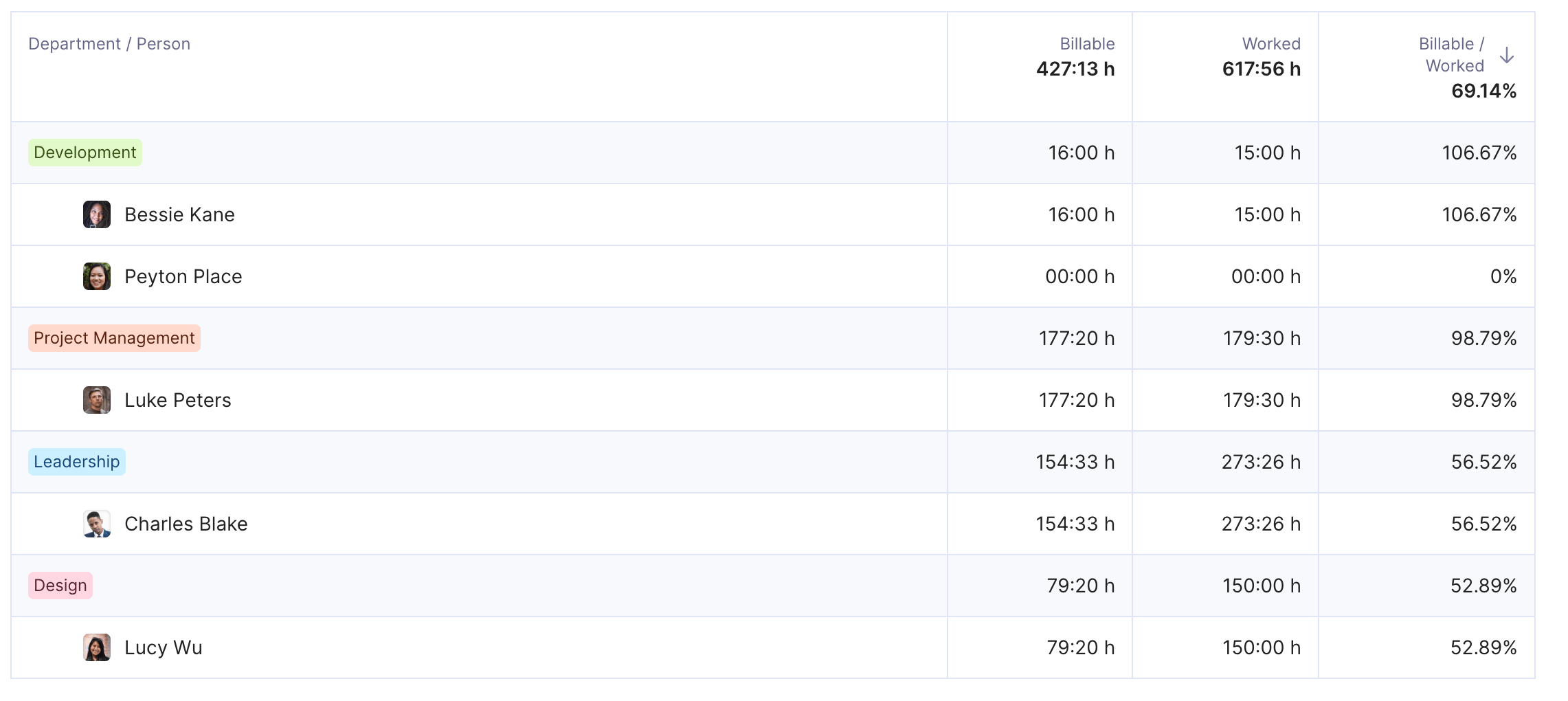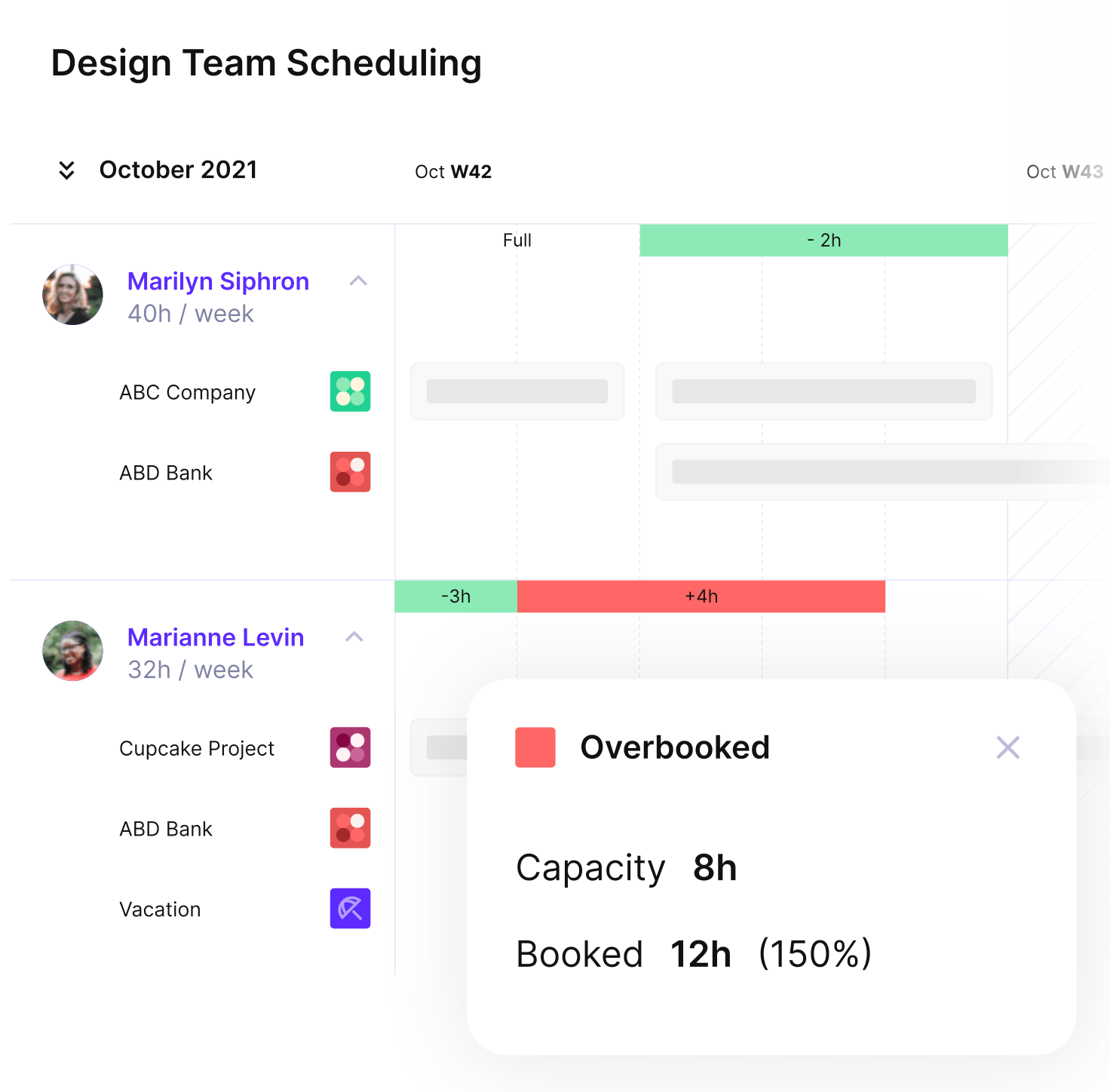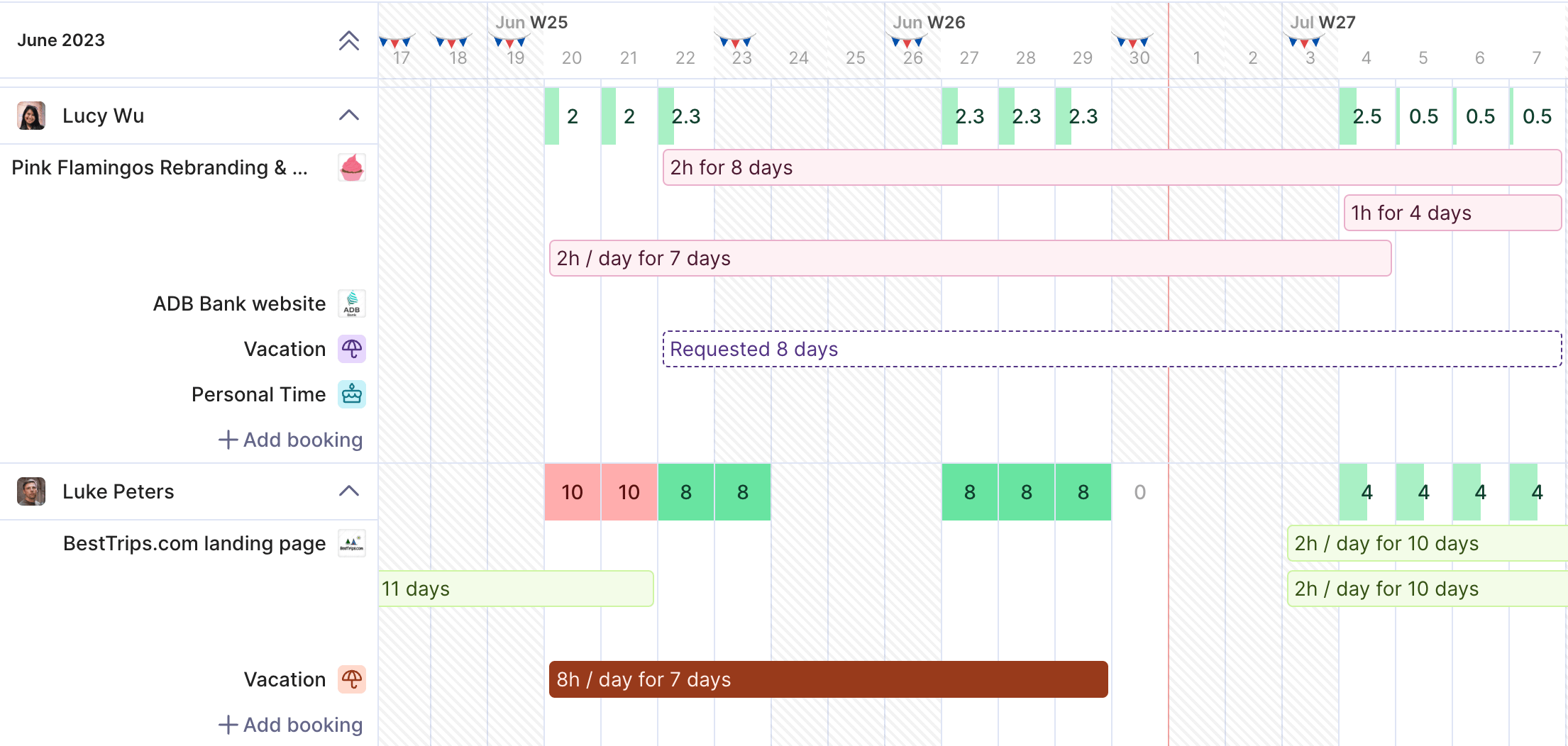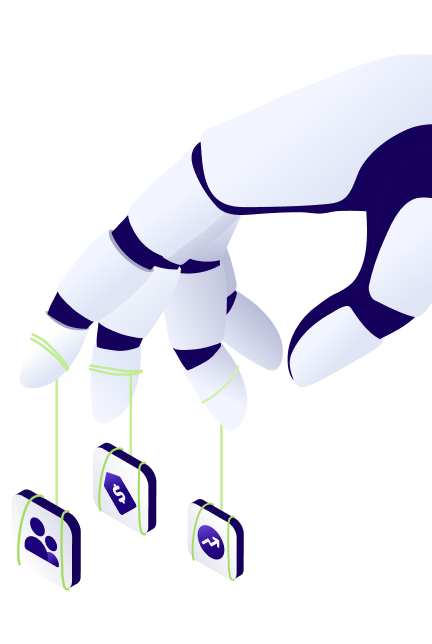Workforce Planning Guide: Definition, Process, Strategies
Effective workforce planning ensures that you have the right people, with the right skills, in the right roles, at the right time to achieve your strategic and operational objectives.
In this guide, we’ll teach you how to do workforce planning and help you get the most out of your current resources. We’ll also share the key steps, best practices and top tools for planning your workforce.
Key Takeaways on Workforce Planning, Management and Optimization
- Workforce planning is a process that aligns an organization’s workforce with its business goals.
- Key steps in workforce planning include analyzing current workforce capabilities, forecasting future requirements, conducting gap analysis, developing action plans, and implementing and monitoring these strategies.
- Workforce planning activities should be aligned with your hiring strategies like talent acquisition, retention, diversity, equity, and inclusion (DEI) initiatives.
- The key benefits of workforce planning include enhanced efficiency by avoiding over or under-staffing, effective change management to adapt to market and industry shifts, and aligning the workforce with business goals to optimize performance.
Free Capacity Planning Template
Download our template to schedule time for billable vs non-billable tasks, track workloads, and get insights into utilization with preset formulas.

What Is Workforce Planning?
Workforce planning is a process of aligning your organization’s workforce with business strategy and goals, usually by balancing labor supply with demand.
It’s goals are to:
- Obtain a clear representation of the workforce needed to accomplish the organization’s strategic intent
- Ensure that the appropriate workforce will be available when needed
- Establish a convincing rationale–a business case–for acquiring new authority and marshalling resources to implement the human resource management policies and programs needed to accomplish the organization’s strategic intent
Source: An Operational Process for Workforce Planning
We talk more about it in out benefits of enterprise resource planning article.
Strategic and Operational Workforce Planning
Workforce planning initiatives are separated into two types – strategic and operational.
- Operational: Concern short-term strategies that are focused on handling day-to-day challenges and changes.
- Strategic: Concerns long-term business prospects, usually across a 3- to 5-year time horizon, that include the company’s mission, vision, and goals.
Aligning short and long-term strategies in workforce planning is necessary for maintaining organizational coherence and adaptability. By ensuring that daily operations support long-term goals, businesses can effectively navigate immediate challenges while steadily progressing toward their business goals.
In our guide to capacity planning and management, we briefly discuss the importance of implementing your strategies across different time periods — long-term, mid-term, and short-term.
Learn more about resource planning with software:
Why Is Workforce Planning Important?
Workforce planning is critically important because it directly supports employee engagement, which is tied to key success factors like higher work quality, lower turnover, and improved customer satisfaction.
According to the 2023 State of the Global Workforce survey, 51% of workers said they are watching for or actively seeking a new job. The same survey results show that 59% of employees are not engaged at work, while 18% are actively disengaged at work.
Employee engagement is associated with many important success factors, such as increased accountability, higher quality of work, reduced turnover, and better customer satisfaction. This becomes even more crucial considering the existing shortage of skilled IT labor.
According to Jean-Louis Benard, CEO, Sociabble: Engagement gives people a reason to care and advocacy gives them a reason to share. When teams feel ownership. Eventually quality rises, turnover falls; and their posts amplify that story to future hires, which matters in a tight IT talent market.
The key reasons why workforce planning is important are:
- Efficiency: It helps to avoid over or under-staffing, reducing costs.
- Change management: It ensures readiness for future market and industry changes.
- Effectiveness: Aligns your workforce with your business goals for optimal performance.
The Main Steps of the Workforce Planning Process
The workforce planning process is a long-term strategy for human resources optimization. It can be divided into several main steps, which include defining core issues or areas of focus, analyzing current capabilities and capacity gaps, forecasting future requirements and availability, and developing and implementing staffing strategies.
Below well share the stages of workforce planning, packed in a simple step-by-step action plan.
STEP 1: Understand the current and future workforce needs
To be able to start the workforce planning process, you’ll first need to provide answers to the why questions: why are you looking to implement workforce planning, and what are you looking to achieve?
An understanding of the broader business context is essential for developing this strategic approach to managing human resources.
Once you have a solid grasp of your main business strategies, investments, various external and internal factors, and what-if scenarios, you can proceed to an analysis of your current and future workforce needs.
Perform a Workforce Analysis
Analyzing the current workforce composition and skills involves a detailed evaluation of employees’ skills, qualifications, and experiences, along with assessing the workforce’s demographic characteristics, such as age, gender, and cultural background.
By examining technical abilities, soft skills, leadership qualities, and other competencies, organizations can identify areas of strength and weakness.
This analysis is crucial for identifying skill gaps, informing talent management strategies, and making decisions about future hiring, training, and development. It ensures the workforce aligns with the organization’s current operations and strategic objectives, facilitating informed planning for future needs.

With productive, you can track your utilization rate across departments and employees.
Forecast Future Workforce Needs
The ability to anticipate and prepare for future changes is key to maintaining an agile and effective workforce. Effective forecasting helps businesses stay resilient and proactive despite external and internal changes.
When forecasting, you’ll need to consider the following issues:
- Job categories requiring significant changes, such as upscaling or downsizing: Identify which roles are likely to evolve or become redundant due to changing business needs or technological advancements.
- Positions that are expected to be hard to fill or have a significant learning curve: Highlight roles that may face recruitment challenges or require extensive training for new hires.
- Changes in business operations or activities: Assess how shifts in business strategy or operations could alter workforce requirements.
- Major project or capital expenditures: Consider the workforce implications of significant projects or investments, including the need for specialized skills or temporary staffing increases.
- External factors such as changing labor market dynamics and demographics: Analyze how broader market and demographic trends could influence the availability and type of talent.
The ultimate goal of forecasting within workforce planning is to align the organization’s human resource capabilities with its evolving needs to support sustained growth and success.
This is not a one-and-done event, but a continuous process of gathering, updating, and interpreting workforce-related data.
STEP 2: Perform a gap analysis
After establishing your current and projected capabilities, the next step is gap analysis and solution development. Here you should compare your current state to your future needs.
In other words; you should assess the skills, roles, and capabilities do you have right now vs. your targets. Then you should prioritize those gaps. Focus on the ones that could hurt your business goals the most — like critical skill shortages or future leadership needs.
In case you’re running a marketing agency, check out our marketing agency software list to get the numbers behind:
- The variance between current campaign results and desired outcomes
- The variance between current and target profit
- The variance between current and needed staffing levels

productive supports your operational planning with heatmaps for easy allocation oversight.
How To Identify and Address Skill Gaps?
The main gap analysis process is pinpointing specific areas where the workforce’s current skills do not align with future requirements. This includes identifying roles that are at risk of becoming obsolete and those that will be in high demand.
It also involves assessing the depth of the learning curve for new technologies or processes and understanding where additional training or recruitment is necessary.
STEP 3: Hire new staff or train your current employees
Once gaps are identified, the next step is to develop and implement solutions. This could involve a range of strategies, such as targeted recruitment for hard-to-fill roles, upskilling or re-skilling programs for existing employees, and succession planning for critical positions.
Monitoring and Measuring Effectiveness
Your workforce planning efforts should be monitored and measured in order to ensure that you’re addressing your identified capacity gaps and forecasted future needs.
To make the sharpest decisions, get the data that answers the following questions:
- Are your strategies contributing to business success?
- Are there changes in business goals that require a revision of the strategy?
- Are there changes in the workforce that affect the strategy?
- Is the strategy flexible enough to adapt to external changes?
Secondly, in order to measure the real impact of your workforce planning strategies against target goals, you can monitor capacity planning KPIs.
What Are the Key Workforce Planning Metrics?
The key workforce planning metrics are attrition rate, retention rate, tenure, quality of hire and diversity metrics. Here is what each workforce metrics is all about:
- Attrition Rate: This metric measures the rate at which employees leave the organization over a specific period. A high attrition rate can indicate issues with employee satisfaction or engagement.
- Retention Rate: In contrast to attrition, this measures the rate at which employees stay with the organization. A high retention rate often reflects positive workplace conditions and effective employee engagement strategies.
- Tenure: This refers to the average length of time employees stay with the organization. Longer tenure can indicate stability and employee loyalty, while shorter tenure might suggest issues with retention or job satisfaction.
- Quality of Hire: This metric assesses the effectiveness of the recruitment process by measuring the performance and contribution of new hires. It can include factors like job performance, cultural fit, and the speed of reaching full productivity.
- Diversity Metrics: These metrics evaluate the composition of the workforce in terms of diversity, including aspects like gender, ethnicity, age, and other demographic factors. They are crucial for understanding and promoting diversity and inclusion within the organization.
We use Productive to care for our employees, which has been an important contributing factor to having a 98% retention rate this past year.
You can find out more about how Steamroller studios uses Productive increase their employee retention rate.
What Are Strategic Workforce Planning Models?
Strategic workforce planning models are HCMI and OPM. Both are here to assess the current workforce, forecast future hiring needs, and develop strategies to ensure the company has the right people, skills, and resources to meet its objectives.
The HCMI model consists of eight steps. It addresses workforce-related questions, followed by scenario analysis and macro (management input) and micro (line manager input) demand forecasting.
It also includes internal and external supply modeling, gap analysis between demand and supply, and the development of a workforce action plan.
In contrast, the OPM model follows a five-step process. It starts by setting a strategic direction linked to broader plans. The second step involves analyzing the workforce and identifying skill gaps.
Developing and implementing an action plan comes next, focusing on strategies like recruitment and training and ensuring that resources are well coordinated. Finally, it concludes with monitoring, evaluating, and revising the plan.
How To Implement Workforce Planning?
To implement your workforce plans you should first define clear objectives that align with your business strategy (map out what this workforce needs to achieve, and how does the plan support these goals). Then you should analyze your current workforce (what are they good at, what can they do better, and skill gaps).
When you’re done with analyzing, you should forecast future needs. Use market trends and internal data to anticipate challenges like talent shortages or shifting customer demands.
A mix of hard data and good judgment goes a long way. Finally, continuously review your strategies and monitor workforce KPIs such as attrition and retention rate to ensure sustained success.
If you want to make this process easier and more data-driven, tools like Productive can help you combine real-time resource planning with performance insights, all in one place.
How To Optimize Workforce Planning?
You can optimize workforce planning by managing skills and knowledge with human capital planning, using workforce software, and monitoring workforce utilization. Remember that workforce planning optimization isn’t a one time thing, it’s a continuous process.
Below, we’ll expand on these approaches:
Effective Management of Skills and Knowledge
The basic first step of optimizing workforce utilization and productivity is effectively managing the skills and knowledge within your company. This activity, known as human capital planning, is a fundamental aspect of strategic HRP.
If you want to manage internal employee skills and knowledge you should:
- Promote employee development: Focus on nurturing the skills your team already has while building the ones you’ll need tomorrow
- Enhance existing employee skills: Make learning a normal part of work, not just something people do once a year.
- Identify potential leaders early: Succession planning ensures you’re not scrambling when key people leave, the goal here is already have someone ready to step up.
- Align skills with business strategy: Regularly review and realign job roles to match new goals and challenges.
- Foster a culture of innovation and agility: Encourage your teams to share ideas and learn from each other
In the later sections of the guide, we’ll cover essential HR strategies that help cultivate your company’s resources, such as talent retention and management.
You’d also might want to use a tool like Productive to help you map your team’s skill and gaps and connect workforce capabilities directly to your business needs.
Leveraging Technology to Enhance Workforce Planning
The right workforce planning software does more than organize data; it provides real-time visibility, automates planning tasks, and helps align your people strategy with business goals.
You also get real-time data like utilization metrics that reflects on your workforce needs and performance. Choosing a platform like Productive can simplify this process, giving you the clarity and flexibility you need to plan smarter and adapt faster.
According to a HR trends research by Gartner, technology was placed as one of the top three priorities for HR leaders in 2024. However, 56% of HR leaders noted that their HR technology solutions and strategy do not match their current and future business needs.
In case you’re also uncertain about which technology to adopt and how to proceed, the next section is your problem solver.

productive supports your operational planning with heatmaps for easy allocation oversight.
Here, we’ll talk about the best tools for effective workforce planning and introduce key features that support day-to-day workforce and agency operations.
Get Started With Workforce Planning
Productive is an all-in-one platform for agencies that supports all levels of workforce planning, from human resources to financials.
What Is the Best Software for Effective Workforce Planning?
The best software for workforce planning is one that gives you a full, real-time view of your people, projects, and resources — all in one place.
Ideally, it should help you forecast future needs, manage capacity, track skills, and align workforce capabilities with business goals. An example of this magical software is Productive.
Additionally, here’s a brief comparison of potential types of software solutions you might use for planning and managing your workforce:
- Cloud-based vs enterprise: The main difference between cloud-based and enterprise solutions is how they host their data, which affects access, privacy, and implementation. Cloud-based tools are easier to implement and are usually more affordable, as many tools offer various subscription-based pricing models.
- Specialized vs all-in-one: Specialized tools target a certain part of a workforce planning process, such as time tracking, capacity management, or budgeting and billing. On the other hand, all-in-one tools support a strategic approach by combining these processes on one platform.
- Agency vs generic: Certain tools are created specifically for agencies, such as consultancies, design agencies, marketing companies, and others. Other software may support various industries, including retail and manufacturing.
To make this selection easier for you, we’ve made a best workforce planning software list. In the following section, we’ll show you how Productive supports your workforce planning and management approach.
| Type | Good To Know |
|---|---|
| Cloud-based | Easier to implement, affordable, subscription pricing, accessible from anywhere. |
| Enterprise | Higher upfront cost, longer implementation, better for handling sensitive data. |
| Specialized | Focuses on one function (e.g., time tracking, budgeting); good for specific needs. |
| All-in-one | Combines project management, budgeting, resource planning, and reporting on one platform. |
| Agency-specific | Designed for agencies and service businesses with tailored features and workflows. |
| Generic | Built for multiple industries; may lack agency-focused features and customizations. |
Productive – The All-in-One Tool for Workforce Planning and Project Management
Productive is a comprehensive project management tool for professional service providers of all shapes and sizes. It’ gathers’s packed with key features that support workforce planning, including billable hours management, resource management, task allocation, utilization forecasting, and more.

productive’s resource planning integrates time off management.
These key features for managing your workforce and resources include:
- Resource Planning: Productive’s resource planning tools support daily and strategic workforce planning. With its responsive resource management plan, you can check resource availability and reallocate employees across multiple projects. Then, by switching to the Profitability view, you can get insights into your budget burn and profit margins. Productive also su
- Time Tracking: Productive helps you manage your most valuable resource (people) with its time tracking feature. You can manage your billable hours by tracking time with an integrated timer, inputting it manually, or setting up your tracking automatically with resource planning. Managers can easily request changes and mark time as billable or non-billable with time approvals.
- Reporting: Productive offers a library with more than 50 reporting templates for agencies, including metrics such as billable utilization, time off usage by people, performance by specific sales representative, invoiced revenue by client, and more. Data can be organized into dashboards and shared with project stakeholders, or scheduled to be sent to email.
- Budgeting: Productive’s financial management features include budgeting, billing, and purchase orders. This facilitates workforce planning by providing clear financial oversight, enabling organizations to allocate resources efficiently and make informed staffing decisions based on budgetary constraints and projections.
- Project Management: Productive helps your teams maintain full visibility of their project progress with multiple views such as Gantt, Kanban, and Calendar. Task management offers dependencies, milestones, to-dos, automatic notifications, and various other features that simplify the repetitive parts of project management.
Additional features of Productive include Sales, Docs, and Automations. Productive also includes a variety of integrations that help maintain continuity with your established workflows, such as Xero, QuickBooks, Google Calendar, Slack, HubSpot, Zapier, and more.
Managing Your Workforce Utilization
Billable utilization is the fundamental metric for tracking the success of your capacity management efforts. In short, it’s the ratio between billable hours and overall hours worked, tracked per employee, team, or department (learn more: what are billable hours and how to calculate them).
A low utilization rate signifies that much time is spent on non-billable work, which can signify ineffective processes. However, an overly high utilization rate (industry standards recommend a maximum utilization rate of 90%) — often means that your employees are being overworked.
This can lead to increased turnover, significantly impacting the success of your workforce planning efforts. Utilization rates can also help guide your long-term planning. For example, you can forecast utilization and decide whether you have enough resources for potential projects.
Or, you can see which underutilized resources in certain parts of the year, and either restructure your teams or guide sales efforts towards acquiring specific clients. Keep in mind that workforce planning is a huge part of the broader HR planning process, they should always work together.
Find out more about managing your utilization in crisis times:
How To Attract and Retain Top Talent?
In order to attract and retain top talent you should focus on building a workplace people want to be part of. Always support growth, a healthy work-life balance, and offer real opportunities. This might sound romantic or unrealistic, however there are several approaches companies can take to attract and keep amazing employees.
Let’s start with attracting.
Hiring Strategies That Attract Top Talent
The most important thing to learn here is that you need to develop talent acquisition strategies that have the capacity to reach a wide audience, as well as the right profile of employees.
Here are some tips for improving your talent acquisition:
- Expand your value propositions – Consider both your traditional (job titles, compensations, benefits) and non-traditional (hybrid work, flexible hours, childcare assistance) value propositions. Monitor how they compare with industry standards. Staying ahead of the competition can be important to attracting top talent.
- Invest in employer branding: According to LinkedIn statistics, 75 % of job seekers consider an employer’s brand before applying for a job. Ensure you get your name out there while highlighting positives such as unique value propositions or workplace culture.
- Track hiring metrics: Consider tracking some key hiring metrics, such as time to hire, acceptance rates, as well as new hire retention, cost per hire, and quality of hire. By understanding these metrics in depth, your organization can continuously optimize its talent acquisition methods to better meet evolving business and workforce demands.
Techniques for Retaining Key Personnel
Show your employees they’re valued and safe. Build strong training and development programs that help them grow their skills and stay engaged over the long term. Succession planning is another key strategy. When employees see a clear career path within the company, they’re more motivated to stay and invest in their future with you.
Finally, focus on creating a healthy workplace culture. Avoid micromanagement and excessive workloads, and encourage work-life balance. When people feel supported both professionally and personally, they’re far more likely to stick around.
Final Thoughts: Workforce Planning for Professional Services
Workforce planning a dynamic process that aligns HR processes with strategic goals. To be really good a closing talent gaps, stick with the advice from this article and use software to make informed decisions about your future goals and recruitment strategies.
The sahre approach to workforce planning will help you foster a productive, engaged, and diverse workforce that drives business success.
If you’re looking for a tool to help shape your workforce planning strategies and keep everything in one place, you should book a demo with Productive.
FAQ
What are the 5 key elements of workforce planning?
The five key elements or steps of implementing workforce planning are aligning your strategy with your business needs, identifying skill gaps, forecasting future availability to prepare for potential challenges, monitoring and evaluating processes, and reiterating by using data.
What are the 5 Rs of workforce planning?
The 5 Rs of workforce planning refer to having the right size of the workforce, the right skills, the right shape or organizational structure, the right site, and the right spend or budget. These principles guide organizations in creating a balanced, skilled, and cost-effective workforce aligned with business objectives.
What are the 5 activities of workforce planning?
Workforce planning involves analyzing the current workforce, forecasting future requirements, conducting gap analysis, developing action plans to address these gaps, and implementing and monitoring these plans to ensure alignment with evolving business needs.
What are the 4 stages of workforce planning?
The four stages of workforce planning are analyzing the current workforce, forecasting future needs, developing strategies to address identified gaps, and implementing and monitoring these strategies for effectiveness and alignment.

